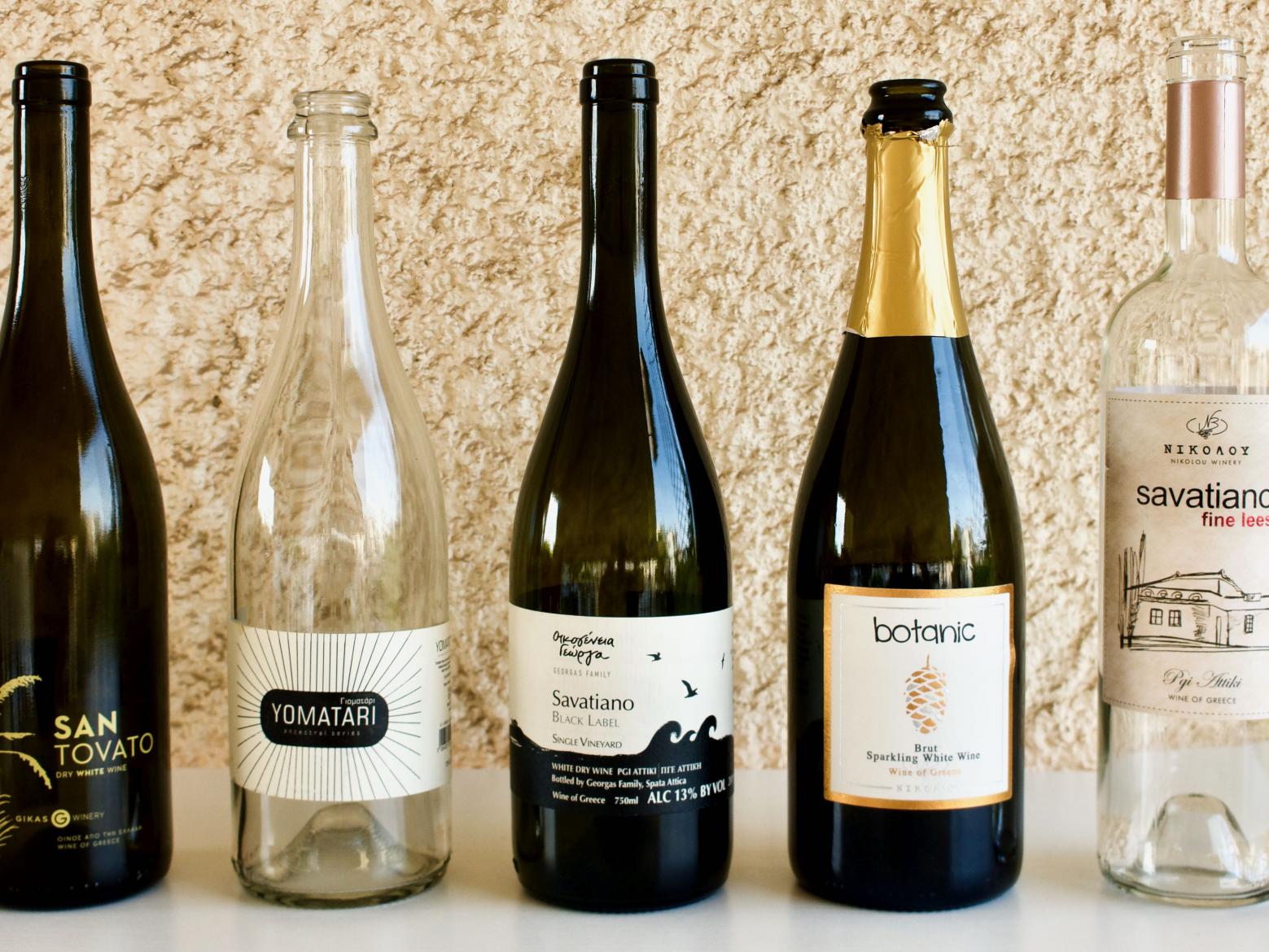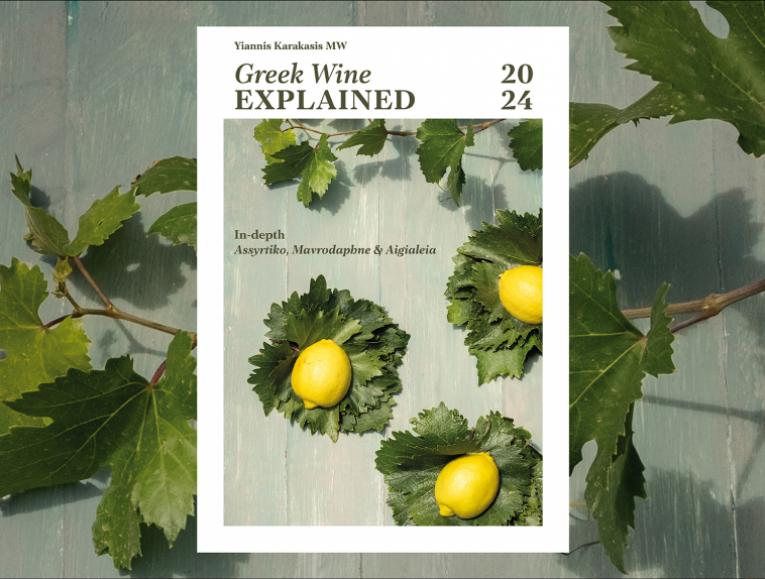The metamorphosis of Savatiano continues (Part 1)
By Olga Antoniadou
I have been impartial to Savatiano for many years and have always felt that the variety had a structure that could make excellent food wines, as its rather medium aromatic intensity complements, rather than covers up, what is on the plate. In years gone by, it was the main wine to be found in the tavernas of Athens. Actually, the owners of these tavernas were the winemakers, in many cases. They bought must from different producers around Attica and fermented it in their large old oak barrels that usually lined the dining area. The must was generally sold to others to make wine. Few producers took the winemaking process all the way themselves, and even if they did, there was not much room for experimentation (lack of resources, lack of wine education, etc.). For the most part, there were just two styles. Retsina (with resin) and Aretsinoto (without resin). Whether it was palatable or not very much depended on which part of Attica the must was sourced from, who the viticulturist was, who made the wine, and what sold easier.
I was dumbfounded the first time I tried a Savatiano worth drinking, Chateau Matsa. This was some time mid to late ’80s. A memorable experience. Much later Papagiannakos and Vassiliou. But, time has been kind to the variety. Nowadays, thanks to several producers, who are now experimenting with different styles that range from pet nat, sparkling, lees ageing, barrel ageing, cold-soaking, etc., Savatiano is being upgraded. One finds well crafted, interesting wines at prices that are a steal. If to this we add the fact that many of the Savatiano vines of the Attica vineyard are old goblet vines, of about 60 yrs of age, that would make their price a double steal.
It is worth mentioning that most of the Attica vineyards are fragmented and most winemakers seldom own large plots all in the same place, which makes work in the vineyard quite tedious. The idea was that if all your plots were not in the same place, if something went wrong in one area it probably wouldn't also affect the other area, so one would not be left with nil to harvest. Also, the plots of old goblet Savatiano vines are often slightly strange; quite narrow and exceptionally long, named lahidia. This resulted from the division made by parents when the land was passed down to their children.
I have referred to Papagiannakos, Mylonas, Fragou, Kokkotou, Markou (Wines of Athens- Attica) and Akriotou (Boeotia) in the past. Today, I would like to focus on some of the other producers of Attica who are seeking styles that accentuate the variety. Needless to say, this was one of the most interesting tastings I have had recently.
I will start with Andreas Gikas of the Gikas Winery, who studied Chemistry and then Oenology and also happens to be President of the Association of Winemakers of the Attica Vineyard (ENOAA). He offered some interesting ideas about what the Association plans to do to help create a brand name for Savatiano, but those I will keep for another post. I was received at the winery in Spata by Andreas, and we sat in a lovely courtyard that is enclosed between the winery and tasting room. A man with a very open mind and a vision for Savatiano. The family wine-growing history goes back to 1875. Most of their vineyards are now planted on the slopes of Mt Cithaeron, in Boeotia, at 350-400 m elevation. Their old goblet Savatiano vines are to be found both in Attica and on Mt Cithaeron.
He told me that the Eastern part of Attica has an Aegean island-like terroir and makes Savatiano wines characterised by volume, an oily texture and length reminiscent of hay and wild oats. The Northern part offers wines with aromatic finesse and increased acidity. In contrast, the Western part has a terroir that is Peloponnese-like and makes robust wines with good acidity.
The work in the winery is shared with his daughter Vassiliki, who studied in Bordeaux, Toulouse, and worked at the University of Suze la Rousse for a year. They make ten labels of wine, of which a single wine is 100% Savatiano, Santovato, from 60-yrs-old vines. Spontaneous fermentation with 30% of the wine fermented in 500 lt oak barrels and the rest left on the lees for 4 months is bottled unfiltered.
Santovato 2019 (Slopes of Mt Cithaeron): Lovely aromas of stone fruit, citrus peel, cereals, honey, wood and hints of minerality. The palate is dense, with an oily texture, refreshing acidity and a long aftertaste. The aromas are more intense on the nose than on the palate.
Georgas Family Winery (open to visitors)
The 4th generation winemaker Dimitris Georgas studied Geology and obtained an M.Sc in Oceanography and Environmental Management. Apart from tending his vines and making every possible grape product (grape water, grape juice, wine, molasses, vinegar, cookies, grape cosmetics), he teaches Soil and Sustainable Food Production at Deree College (Agia Paraskevi, Athens). Curly hair flying all over the place, a warm heart, a philosophy to life and his business, he doesn't want to grow his business more because he wants to supervise all that takes place, from the vineyard to the products. The winery is situated in Spata, is biodynamic certified, and cultivates 5.5 ha vineyards spread in the areas of Rafina, Artemida and Pikermi. The soil is clayey-loam with much limestone. Production is low. He makes about ten labels, of which 5 are 100% Savatiano. Natural winemaking methods result in wines of true character. We tasted the wines in his beautiful bioclimatic home.
Yomatari Pet Nat 2020: Two separate bottles tasted (one at the winery and one at home), which showed some difference in the sparkle. Hazy, fresh, loveable, complex, with aromas of red apple, peach, citrus peel, chamomile, cereals. Medium length.
Savatiano Black Label 2019: 5 days cold soaking, spontaneous fermentation in stainless steel. Unfiltered, with no added sulphites. Gold-amber in colour with aromas of citrus peel, lime, ginger, honeysuckle, and a hint of saltiness. Refreshing, complex, with great length.
Nikolou Winery (open to visitors)
Viticulture and winemaking have been in the family since 1875. The present-day winery was built in 1980 and included restoration of the old building. Situated in Koropi with the vineyards located in the wider area and up to 15 km away. 5 ha owned and 10 ha contracted. Vassilis studied Food Technology and then Chemistry and Oenology and now teaches at the Department of Oenology and Beverage Technology of the University of West Attica. We were received by the whole family Vassilis, Rania, Vangelis, Christina and sat in the winery's courtyard tasting the wines. Vassilis loves to share his knowledge. His devotion to his work can be seen in that all the traditional method sparkling wines he riddles himself in self-made pupitres, and the bottles of his Yellow Savatiano he decorates himself by hand! But, I loved the whole family, Rania, for her generosity, and Vangelis and Christina for the interest they show in the winery. They make 13 labels, of which 5 are 100% Savatiano.
Botanic: A traditional method sparkling resinated wine that spends 6 mths on the fine lees. An interesting take on Savatiano. Spicy with aromas of resin and mastic, rich on the palate, refreshing, with great length. I would have liked it better with a little more acidity.
Savatiano Fine Lees 2018: The grapes are sourced from 25-yrs-old vines, hand-harvested, pressed, clarified with 36 hrs sedimentation and fermented with chosen yeast. The wine spends 12 months on the fine lees. Aromas of cereals, citrus peel, stone fruit, linden flowers. Full-on the palate, with medium acidity and nice length.
To be continued...




